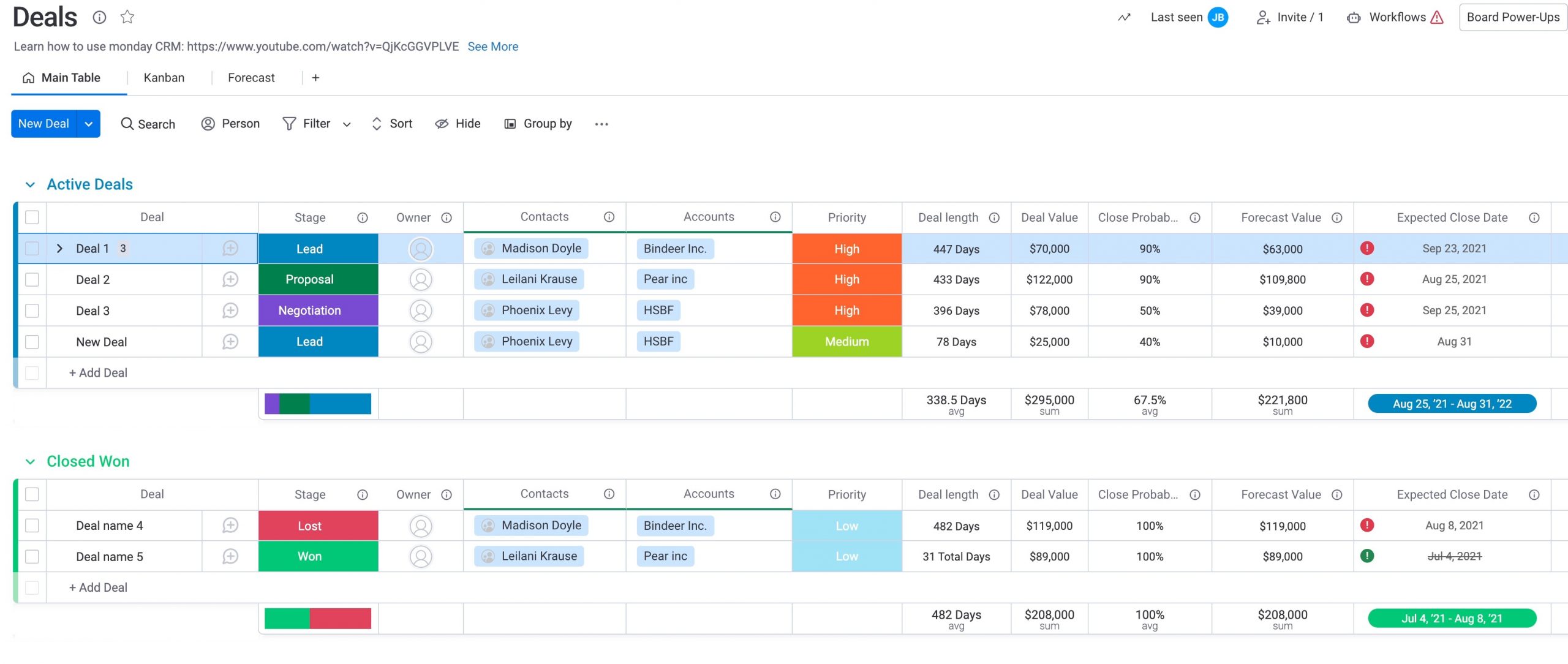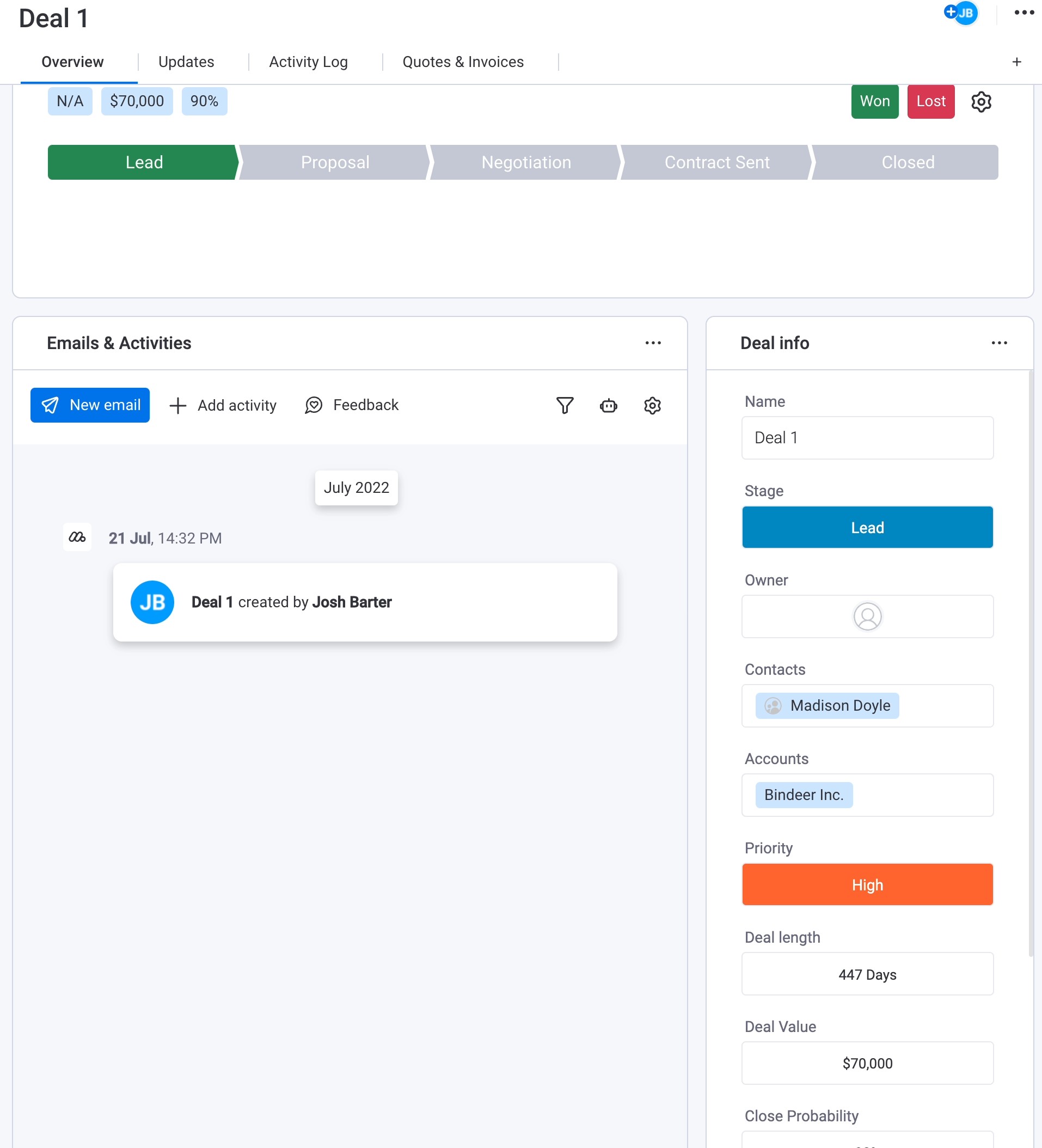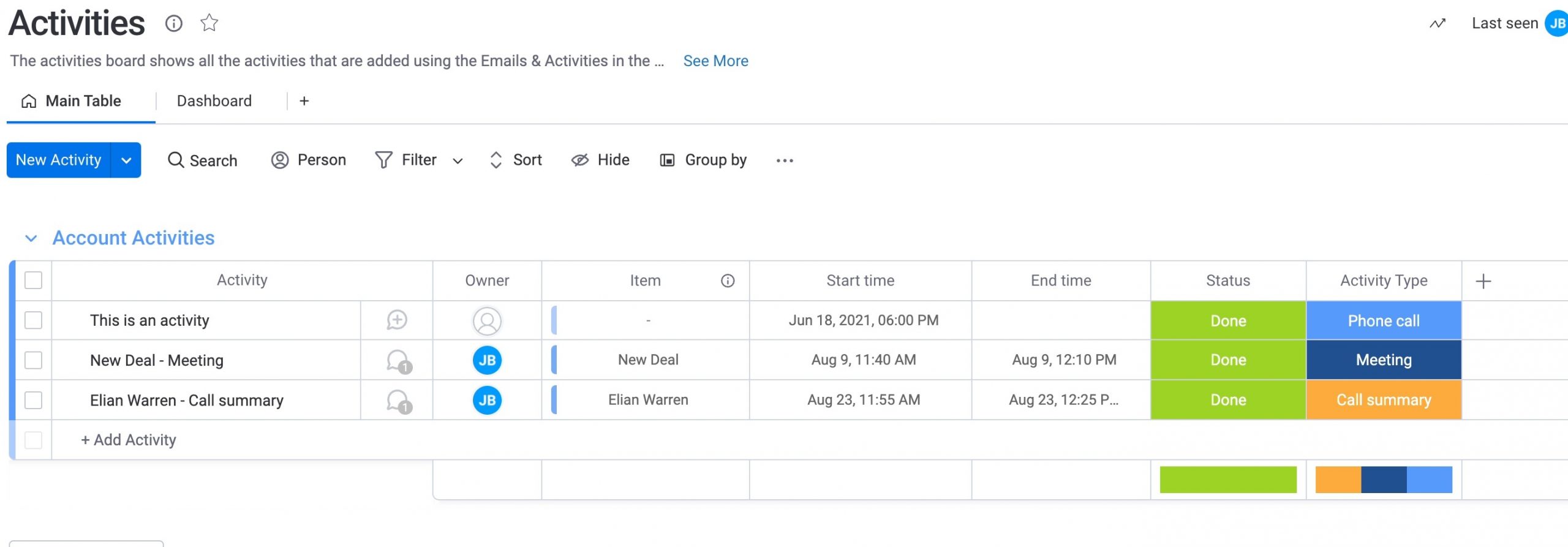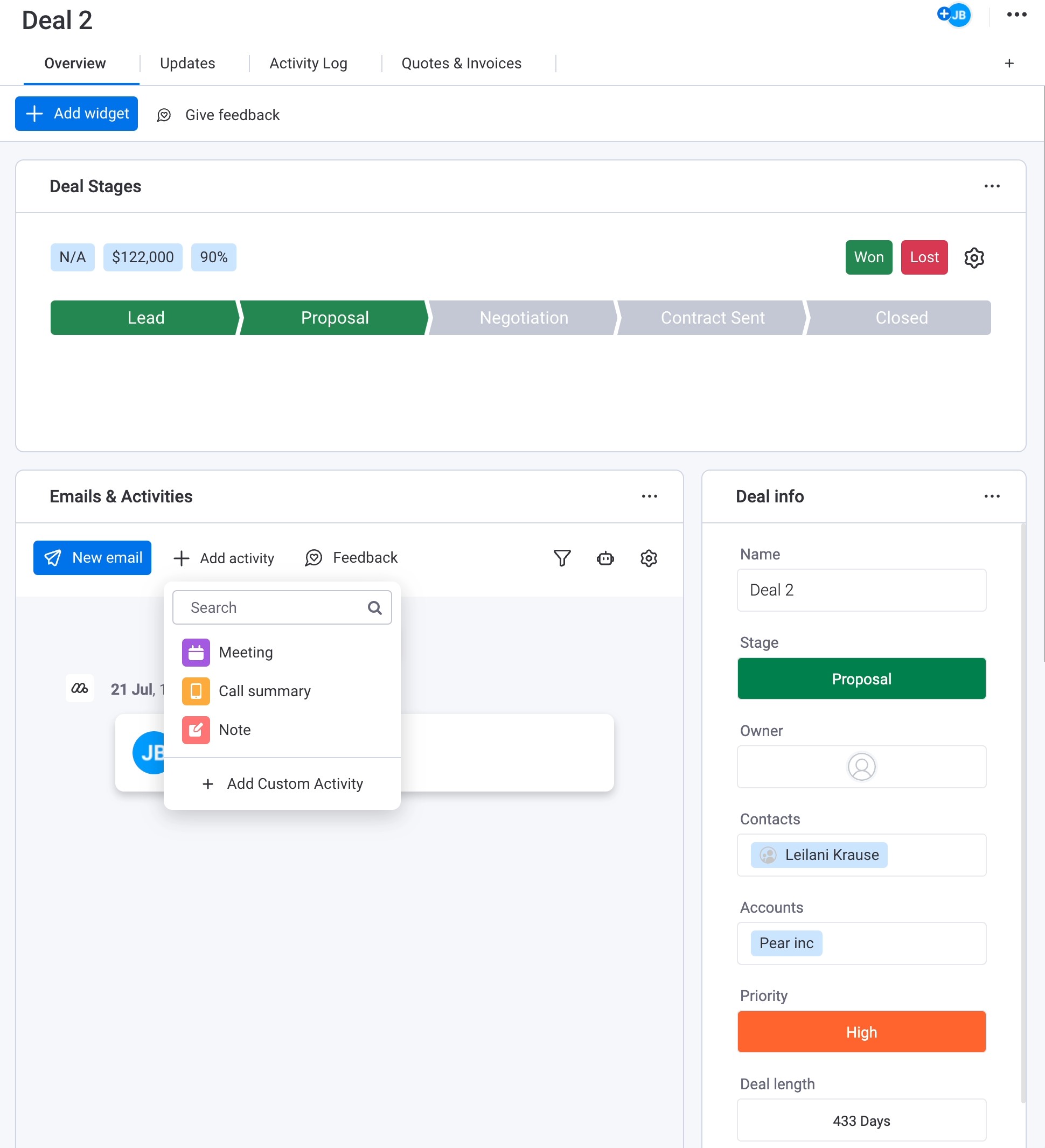monday.com CRM

So what exactly is monday.com sales CRM and how does it work? In this article we review the structure of monday.com sales CRM, it’s core features and how you can use it for outbound and inbound sales management.
Getting started with monday.com CRM
In monday.com you can access the full suite of available products using the 9 dots just above your profile. This is where you can switch between “work management” which is where you can fully build and customise your monday.com workflows and the new product suite of monday marketer, monday projects, monday sales CRM and monday dev. You can use this functionality in your account to activate a trial of monday sales CRM and also to switch between different products depending on where you and your team are working.
The monday sales CRM structure
Let’s talk about the structure in a bit more detail. The following boards are created in your monday sales CRM product.
- Deals
- Contact
- Accounts
- Leads
- Activities
What exactly do they do and how does it all fit together. Let’s walk through the structure of each of these boards and how they connect to each other to give you a fully functioning CRM in monday.com.
Leads
You can visually manage the status of the lead using the status column. This is useful for further reporting and visualisation with monday.com dashboards.
Contacts
Here’s what the contact board looks like…
Let’s look at both the “Accounts” and “Deals” boards now in more detail.
Accounts
Here’s what the accounts board looks like
Deals
Deals is the location where most of the sales activities and ongoing management will happen. Just like our two other boards – contacts & accounts, we will use the connected boards columns to connect contacts and accounts to deals we are working through the funnel. The deals board is where you would likely start to bring some customisation in to:
- Create different groups for varying stages of deals that progress through your funnel
- Create different board views to get the right views across different teams
- Build data points, formula and information you want to track across columns throughout the process
In the example board you can see we are collecting things like:
- Deal length
- Deal value
- Probability
- Forecast value (based on a formula taking into account value & probability)
- Close date
The real power of monday allows you to customise this board to get as close to how you want to track sales activities and also what you want to report on.
Activities
This is what the board looks like
We partner with the world’s best..






Want to talk? Let's discuss your business
Find out how you can optimise your operations, simplify how your team works & boost organisational productivity. Tell us some information about your business & how you work. We'll be in touch, quickly.
"*" indicates required fields
Monday.com Implementation
Monday.com for enterprise
Monday.com for accountants
Monday.com for bookkeepers
Monday.com for coaching
Monday.com for construction
Monday.com for digital agencies
Monday.com for e-commerce
Monday.com for manufacturing
Monday.com for marketing
Monday.com for not for profit
Monday.com for real estate
Monday.com for service businesses
Monday.com for travel
Asana Implementation
Asana for enterprise
Asana for accountants
Asana for bookkeepers
Asana for coaching
Asana for construction
Asana for digital agencies
Asana for e-commerce
Asana for manufacturing
Asana for marketing
Asana for not for profit
Asana for real estate
Asana for service businesses
Asana for travel
ClickUp Implementation
ClickUp for enterprise
ClickUp for accountants
ClickUp for bookkeepers
ClickUp for coaching
ClickUp for construction
ClickUp for digital agencies
ClickUp for e-commerce
ClickUp for manufacturing
ClickUp for marketing
ClickUp for not for profit
ClickUp for real estate
ClickUp for service businesses
ClickUp for travel














